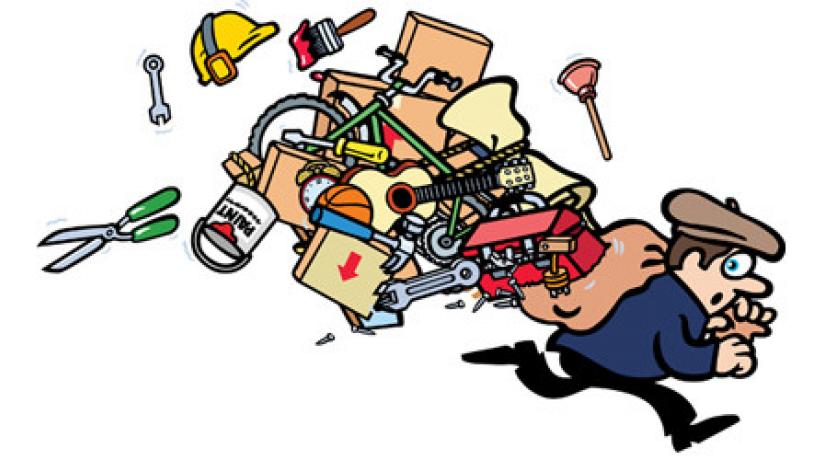Last December just before Christmas, builder Daniel Lucas, of Colossal Homes, arrived at the site of the half-completed house he and his crew were wrapping up in anticipation of the holiday break. The previous day, workers had made preliminary connections for a ducted heating unit, and the apparatus had been set aside in the late afternoon, high above the ground amid a network of roof timbers, for Lucas to address the next morning.
By the time Lucas returned, however, the unit had vanished. Thieves had done their work.
“It represented such a waste of time and money,” Lucas said. “It wasn’t just the fact that an expensive piece of equipment had to be replaced and paid for again that made it so frustrating, but also the delays in finishing the work and the time spent having to do interviews with the police.”
What added insult to injury was the brazenness with which the thieves had committed the crime; the police helped him determine that they had entered the site just prior to afternoon lock-up, extracting the unit in broad daylight. And a month later, it happened again. This time the stolen goods included ceiling fans, light fittings and– adding insult to injury– a kitchen sink.
The theft of working tools from builders and construction workers is a well-established and vexing problem.
“There is a large demand for [black market] power tools and hand tools, and as long the demand is there, people will continue to steal them,” Sergeant Justin Mercovich of the Victoria Police says. The sergeant is part of the Melbourne Vehicle Crime Reduction Team, which handles numerous reports of tool theft from vehicles, on work sites and elsewhere.
Mercovich and his colleagues work hard to educate the public about the risks of leaving unmarked property in vehicles. It tempts thieves, yes, but even when tools are recovered, it’s difficult to achieve a conviction, and it still leaves the rightful owner empty-handed.
“We can seize tools,” Mercovich explains, “but without identifying marks, we can’t establish ownership and get them back to the tradesperson from whom they were stolen. Writing down the serial numbers of power tools is a good precaution to take, but it doesn’t happen anywhere near as often as we’d hope.”
To a certain extent, that’s understandable. The labelling process is time-consuming and tedious, particularly when it involves adding distinguishing marks to tiny, irregular surfaces. It may hardly seem worth the effort to label a screwdriver, for example, but the tool thief exploits that apathy.
To help members combat the problem of tool and materials theft, Master Builders has recently begun offering an affordably priced identification system that greatly reduces the time and tedium associated with property labeling, and that has been shown to reduce theft by 75 per cent. The product, called Microdot (www.microdotaustralia.com.au), allows the user to apply a unique serial number to almost any surface with the use of a small brush, pen-like applicator or pressurised spray can.
The microdots themselves are made of a thin skin of durable nickel and have a diameter scarcely larger than that of a pinhole. Each dot is etched with an alphanumeric number unique to the client who purchases the Microdot kit. The dots are suspended in a clear varnish-like medium that hardens and dries quickly upon application, and a single sweep of the brush typically deploys a loose cluster of the nearly-invisible tags. They are easily viewed and read, however, with the use of a small magnifying glass, which is how police typically observe the serial numbers.
“Because the dots themselves are so small, they can be placed discreetly and in great numbers,” Matt Loughlin, Manager of Master Builders Assist, explains. “The chances a thief could forcibly remove all of them without doing significant damage to the item are very slim. It just wouldn’t be worth the risk of missing one.”
But perhaps the greatest deterrent effect is achieved by the warning decals that come with each Microdot kit, advising that the objects in question have been labelled with Microdot technology.
According to Microdot Managing Director Neil McCormack, that warning sticker is enough to convince a would-be thief to leave the goods where they are and not take the risk. “No one can obtain the warning labels without purchasing a Microdot kit, so the message has real meaning,” he said.
Master Builders is the exclusive building industry vendor for Microdot in Australia and will be arranging demonstrations for the benefit of Master Builders members, who are now able to purchase Microdot for the lowest price, in both Builder Packs and Tradie Packs. For more information, contact the Assist Department on (03) 9411 4555.





